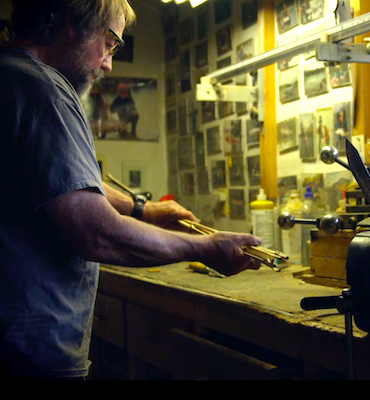Purchase Abby’s Foraging Wild Spices Course here.
By Abby Artemisia:
I think we can agree that 2020 will go down as one of the craziest summers in memory! How are you holding up? We’re all thinking about ways we can become more self- and inter-reliant. When it comes to empowering ourselves, health is at the top of most lists. Maybe that’s why you’re on Anchored Outdoors, to learn to homestead or forage as a part of your health independence to-do list. So, let’s talk about 10 of the easiest herbs to forage and harvest from the garden and how to use them to stay healthy.
Back in the day, Native Americans and indigenous folks couldn’t run to the drug store. Their pharmacies were their gardens, woods, meadows and whatever the local medicine person had on hand. The current world climate is giving us the opportunity to get back to those roots. We can research indigenous history/ethnobotany to learn more. (Find out more in the resources below.) I always try to give thanks and give back to those who came before us for that knowledge.
Let’s dive right into it!
Mints
Let’s start easy, with the mints! There are over 600 varieties of this incredible plant. In herbalism, we talk about “energetics”; each season and each person has different energies. Summer is usually hot and dry (depending upon which part of the world you’re in). This means cooling and moistening herbs are super helpful. And mints fit the bill.
Peppermint and spearmint are easy ones to start, and they might already be in your garden. I can’t think of anything more cooling than a cup of mint iced tea. Not surprisingly, mints are in a category of cooling herbs called “refrigerants.” Make the tea in large batches, by pouring a cup of boiling water over a couple tablespoons of fresh mint leaves, or boil a gallon of water, turn the heat off, and add a cup of fresh mint leaves. Cover and wait 5-20 minutes or longer. Sweeten to taste, ice and you’re ready for refreshment. You can also use this same recipe for sun tea by putting the water and mint in a covered jar in the sun for a few hours, up to a day. Then refrigerate or ice.
Tulsi aka holy basil, and lemon balm are two more mint family herbs that are cooling, not only physically, but to our emotions as well. The heat can spice up our emotions and make us hot-headed. The chaos of the world right now can cause grief, sadness and depression. People have traditionally drunk these two herbs in tea to fight off these ailments. Plus, they’re both delicious! Combine them with other mints or use alone for a calming tea, especially if you’ve been quarantined way too long with your family. Any basil will work for this, though the other basils tend to be hotter in energy.
Hibiscus
Next, we have one of my favorite tea herbs in one of my favorite herbal categories. Hibiscus has a beautiful flower that makes a beautiful tea. This is one you can grow or forage, and there are a lot of related species with flowers and leaves that are helpful, including the many hibiscus species, rose of Sharon (technically a hibiscus), marshmallow (the plant, not the sugary treat, though it originally came from the root), hollyhock, and linden or basswood. These fall into the category of “demulcents.”
If you’ve ever been to one of my classes, you know my favorite word, which describes the quality of demulcents, “mucilaginous.” Think about what okra does when you cook it (gets slimy) and now you know about demulcents. This sliminess is super soothing for our mucus membranes, especially our respiratory and digestive systems. Drink the tea of the flowers and/or leaves. They work as a refrigerant that helps the water rehydrate us better, soothes inflamed mucus membranes and skin (as a poultice, compress or wash), and is a source of Vitamin C. Demulcents infuse best in cool water, so put the leaves and/or flowers in water and throw it in the fridge for a few hours for a cooling healthy beverage.
Plantain
Speaking of demulcents, plantain is one of the best I know. I’m not talking about the banana-like food with the same name. I’m talking about the weed (in the Plantago genus for those of you down with Latin). This humble weed is my favorite remedies for beestings. Show kids how to identify it (always using 100% positive identification), chew it up and put it on the sting as a poultice to draw out the bee venom. You can also make a cold infusion of the leaves for another refrigerant tea for hot days or add them to oils and salve for soothing.
Violet
Violet is yet another demulcent weed leaf. Make sure you have those heart-shaped leaves and make a cold-infusion for a cooling tea that will soothe inflamed mucus membranes and help with constipation. Just go easy, it works really well, a small handful of leaves per quart of water will often do the trick. The leaves are nice in salad and pesto, again using moderation, mix with other leaves.
Sumac Berry
Sumac berry is another source of Vitamin C that grows in abundance. No, not poison sumac, those berries are white. The ones we consume are red. Make a cold tea infusion of these red berries, strain, and it will magically taste and look like pink lemonade! Kids love the taste and fun of this. Just be cautious when harvesting. Don’t forage near roads or under power lines, where these often grow. You can also make your own za’atar spice with the berries and a couple other easily accessible herbs (find the recipe in my The Wild Foraged Life cookbook.)
Yarrow
Let’s talk more about herbs for the skin. Yarrow is easy to grow or forage abundantly. It’s generally recommended to only employ the species with the white flowers. One of the stories of how it got the first part of its botanical name (the genus), Achillea, is because it supposedly stopped Achilles bleeding when he was shot with an arrow in the heel. I love it for this. It’s a great idea to keep some dried and powdered leaf in your first aid kit. You can use the tea as an antimicrobial wash or compress. It also makes a great bug repellent, reportedly as effective as DEET in research done by the military.
Berries
And for our final herb, we have berries. I’m talking specifically about raspberries and blackberries. The roots are known to be strong astringents, with the leaves being milder. They come in handy in tea or tincture to help with wet coughs or diarrhea. The berries are full of antioxidants and bioflavonoids that are shown to support the immune system, protect against cancer, strengthen capillaries and more. Freeze as many as you can for smoothies, cobblers and oatmeal all year long.
This list is just the beginning. What herbs can you think of? What are your favorites? I truly believe our best medicine is growing right outside our door. Start looking around, identify different kinds, drink them in tea, make remedies, put them in your apothecary, share with friends, family, and neighbors. Stay healthy and calm and pass it on.
Resources:
Native American Ethnobotany Database
Native American Medicinal Plants by Daniel Moerman













